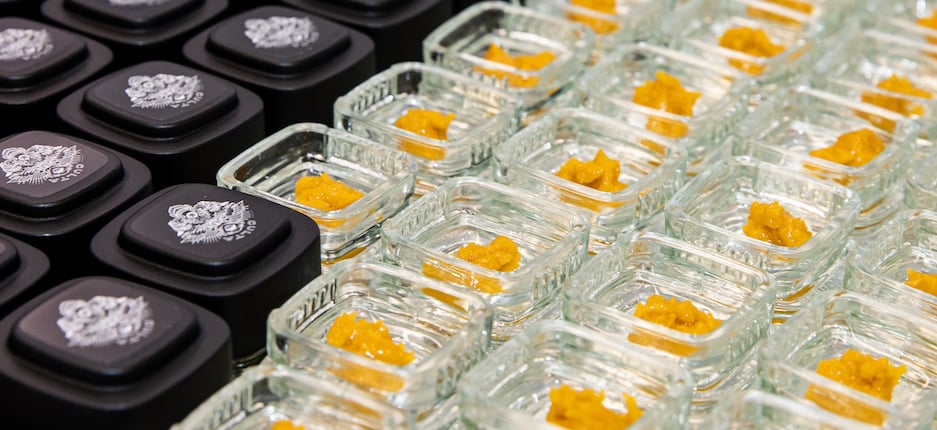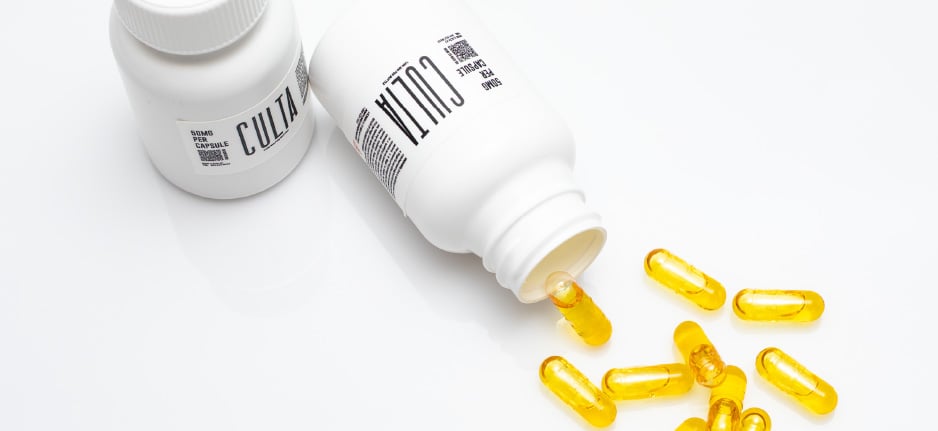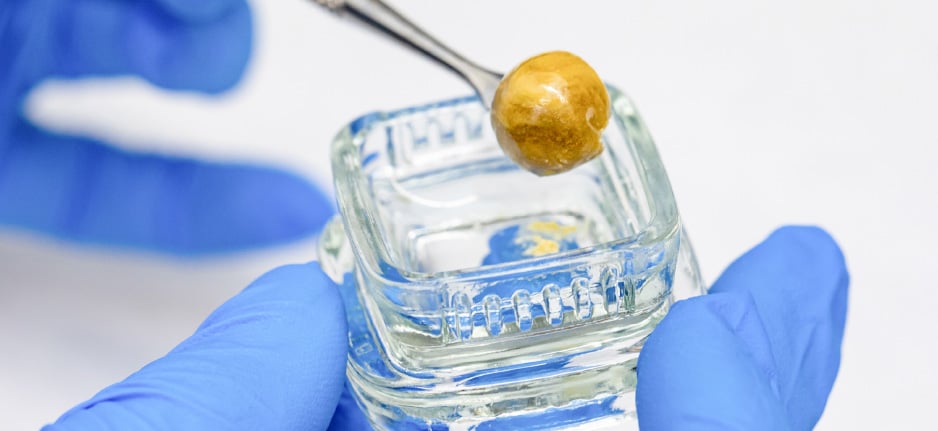Imagine this: you’re in a medical cannabis dispensary browsing for a new type of medication and come across “live resin.” Perplexed, you stand and wonder what live resin is, how it’s made, how it’s different from all those other concentrates with weird names, and how to consume it. Sound familiar? You’re not alone! Many patients come to us with similar questions about live resin, and we’re here to answer them. Read on to learn more about live resin, a relatively new concentrate in the cannabis world.
What’s live resin?
Live resin is a type of cannabis concentrate that’s made using frozen cannabis material. As a result, the end product has a robust terpene and cannabinoid profile that resemble the qualities of a live cannabis plant. Its name comes from the extraction process, which is centered around using live cannabis. This live cannabis is frozen before and during extraction, which locks in all the properties that give a cannabis plant its smell and flavor profiles.
It’s typically amber/gold in color, though it can sometimes look white. Because so much of the plant is preserved in live resin, its unique color profile depends on the strain of cannabis used to make it. Live resin is very sticky and can’t be smoked like flower (more on that later.)
How is live resin made?
If the freezing and extracting process sounds complex, it’s because it is. It requires expertise and special equipment and comes with a big “DO NOT ATTEMPT THIS AT HOME” disclaimer. As the name implies, the extraction process begins immediately after the plant is cut; this way, it’s still “live” when frozen. Unfortunately, a plant’s terpenes begin to degrade as soon as it’s cut, so speed is of the essence.
Once it’s cut, the cannabis cultivator flash freezes it immediately after harvest. Many patients are surprised to learn that the product actually remains frozen throughout the entire extraction process! This ensures that the end product is as fresh as possible. Once frozen, butane is used to extract the cannabis oils through a closed-loop system. During this process, butane and/or propane can be used at different ratios to dial in what kind of final product is desired.
Closed-loop systems are expensive ($10,000+), and closed-loop extraction works by cooling and liquidating solvents, like butane, which bond to the cannabinoids and terpenes before extracting them from the plant. This cold liquid butane then goes through a dewaxing process where the extract is purified. Then, heat is applied, which boils the solvent out, leaving behind the concentrate that’s known as live resin.
Live rosin vs Live resin: What’s the difference?
OK, so this is where it gets really confusing, right? Let us explain. Live rosin and live resin are both similar in that they take the same fresh-frozen approach to extraction, with one key difference: live resin uses a solvent (usually butane), and live rosin is solventless (it uses a combo of heat and pressure to extract the trichomes from the plant.) In simple terms, rosin is a physical separation and resin is the result of chemical separation. It’s also important to note that rosin and resin (without the “live” signifier) use dried plants, not frozen ones.
How long has it been around?
In the cannabis world, where cannabis plants date back to 28 million years ago (!!!), live resin is the new kid on the block. Sometime between 2011 and 2013, a group of growers and extractors in Colorado decided to try out new methods of extraction. Their idea of using frozen fresh plants and a butane hash oil extractor culminated in what we now know as “live resin.” Since then, it has exploded in popularity with an 86% increase in sales since 2020, and can now be found in virtually any cannabis dispensary.
How to use live resin
Live resin can be consumed in a few different ways, and one of them (dabbing) requires special pieces of equipment known collectively as a dab rig. Here’s a bit more on a few of the most common ways to consume live resin:
- Dabbing - If you have a dab rig, you’re all set for dabbing. Dabbing involves using a butane torch to heat a “dab nail” to 350-400 degrees. Once it’s heated up, you’ll place a small amount of live resin on the dab nail and inhale the way you would out of a bong. If you prefer not to use a torch, you can use an e-nail, which uses electricity to heat up the built-in nail.
- Dab pens - Dab pens look just like a dry herb vaporizer and operate in a similar way. You just add your medication into the chamber and the device does the rest. This can be a good choice for beginners since a dab pen is considerably less expensive than a dab rig; just make sure you’re using a vaporizer that’s made for dabs (NOT a dry herb vaporizer.)
- Vape cartridges - Some cannabis dispensaries sell live resin in pre-filled vape cartridges that you can use with 510-threaded vape pens. You can also purchase disposable vape pens, but this isn’t as eco-friendly or budget-conscious as using a reusable vape pen battery.
- Mix with flower - Finally, patients can mix live resin with flower, whether it’s adding some to the top of a packed bowl or on the end of a pre-roll.
One very important note: since live resin is a concentrate, it’s much stronger than flower. A little goes a long way, so please be careful and speak with your certifying provider about dosing and safety.
Is live resin safe to use?
Generally speaking, live resin is safe to use if purchased from a reputable dispensary, like CULTA. By purchasing from a dispensary/producer operating legally in the state where you live, you can ensure that the product meets any state-mandated health requirements. Since live resin is a solvent concentrate, it can only be sold if its residue solvents are under a certain threshold. Speak with one of our patient coordinators to learn more about solvents and the safety of concentrates like live resin.



